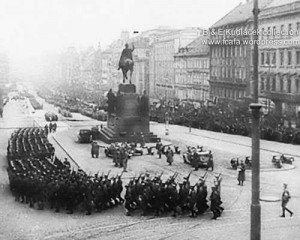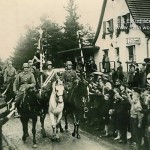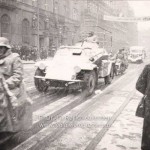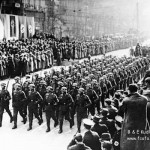Jan 28 2014
Overview & Primary Sources
Two sets of personal accounts found among the exercises in the World History Sources page at the Center for History and New Media focus on American reactions to German invasion of Czechoslovakia in March 1939. A letter from Mark Kistler, a vacationer traveling in Central Europe treats the invasion of Prague as once incident, though an important one, among several in his excursion. Before reading the commentary on certain selections, my first impression of his letter was that his restraint in characterizing the invasion may have been out of caution in a letter, sent from Nazi Dresden, which may very well have been intercepted by Nazi authorities. After reading the comments, I agree that perhaps his recounting of the events in Prague may have derived from a lack of awareness. The chatty tone of the letter may indeed make it seem silly, however this is a letter which seems to be from one young cousin to another, and relaying the details of his whereabouts may have been more of a priority than giving an account of the German occupation. He was aware enough of the growing political tensions to know that his American passport provided some protection.
If one estimates his age at about 20 years, based on his listed activities and the tone of the note, his impression of the coming war is somewhat understandable for somebody who would have no personal memories of the previous world war. Furthermore, considering that public isolationism in America was still strong enough to affect the decision making of national leaders, Kistler should be forgiven for his naïve assumptions that Americans will not be immediately at risk in Europe. The historical record conveys that some believed the Munich Agreement might have precluded an outbreak of war, so the further provocation made by the occupation may not have struck him as a drastic development. The telegraphs which follow, including the tepid rebuke by the US government, makes clear that the United States still maintained diplomatic relations with Germany. Perhaps some travelers assumed a conflict was unlikely to occur, and if it did they could get in a last bit of fun in Italy or Switzerland before the war. Moreover, even if Kistler was aware of the danger in Central Europe, openly revealing his concerns in a letter, at a time when Germany was still attempting to uphold the fiction of their peaceful intentions may have made his next stop at a German border much more problematic.
- German Troops Entering Czechoslovakia
- German Troops in Prague
- German Troops Marching in Prague
In the second account, telegraphs indicate that Acting Secretary of State Welles and Minister Carr in Prague had reason to believe that their communication was secure. In an age when diplomatic cables were not subject to interception by hacktivists, these two clearly had some expectation of privacy. Carr feels he can be frank about the state of censorship and the danger posed by the Gestapo, even if he cannot be blunt with his superior, and has to make his hopes to return from his post in coded language about “instructions in regard to [his] future course.”
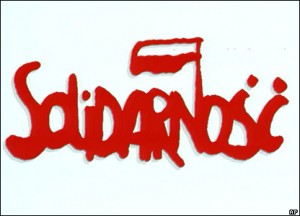
Solidarity Logo from the BBC
Two primary sources from the 1989 website give an indication of the tone of the opposition in Poland at the time of the collapse of the communist totalitarian system. Both convey something about the confidence felt by those battling the ruling party. The anarchist pamphlet has many images, symbols, and Polish text, the translation of which is beyond my ability. However, two things are evident to me that seem significant. The first is the recognizable Solidarity logo, and the second are the list of names found at the top of one side of the page. If these names are those of the producers of the flier, that would indicate a confident defiant stance against the authorities just as the Chartists in Czechoslovakia provided their names and address in 1977 to convey their lack of fear of state reprisals, which were still a potential danger . The Solidarity logo is also found on the election poster portraying Gary Cooper as he carries a ballot. That logo appears to be a powerful brand, as Solidarity was a broad opposition movement, and from my reading of Stokes, the branding that included the logo and the name change of the Interfactory Strike Committee to Solidarity was an important precursor to making the trade union movement so broad, and eventually overtly political.
Comments Off on Overview & Primary Sources
